EU Blockchain goes mobile: 2 Watts is all it needs
The "EU Blockchain" team of the European Commission - DIGIT (formerly "Blockchain Competence Center") has successfully managed to compile the "EU blockchain" (modified version of the steem blockchain) for ARM 8 (64 bits) processors.
Odroid C2
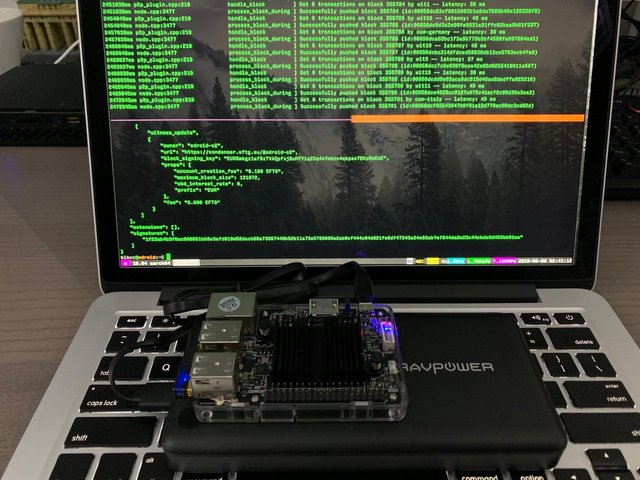
An "Odroid C2" device from Hardkernel, retail price $46 sits on a RAV Powerbank (on a laptop keyboard)
In this short movie, an Odroid C2 device, powered by a RAV powerbank (max 10 W maximum output) successfully synchronized with the test network of EFTG and has just validated a block.
The device running the modified steem clone has 2GB of RAM and 8GB of eMMC flash memory. It connects via Wi-Fi and is mobile.
Raspberry PI 3b
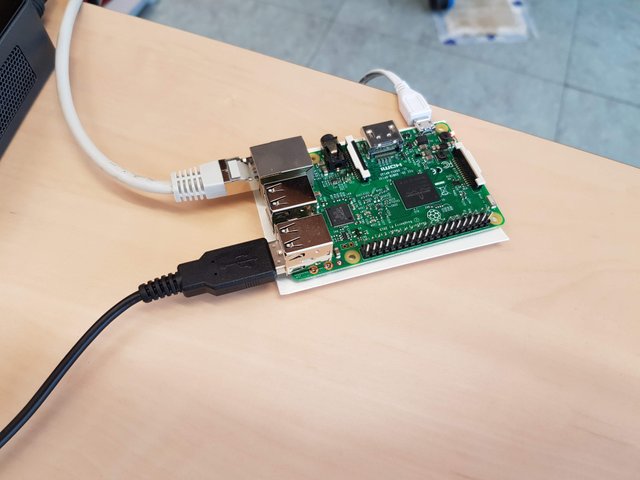
After compiling on an Odroid UX4 with 4GB RAM, the blockchain runs successfully on a Raspberry PI 3b (1 GB RAM only)
What is interesting to note is that while running, the RPI consumes 2 Watts of power ! That means 48 Wh in a day or 17.52 kWh per year. Which at the typical retail price of 0.14 €/kWh it means that running an EU blockchain RPI node 24/7/365 costs ... 2.5€ per year in electricity ! "Greener" than green !
A 2 minute video of the RPI "at work" can be watched here:
Here is the witness list from the EFTG test network. Note that in addition to the RPI and the Odroid C2, the Odroid UX4 which compiled the code is also able to validate blocks successfully, which brings us to 3 different ARM devices tested successfully.
And here is the profile page of the "raspberrypi" witness

Related posts
- The European Financial Transparency Gateway (EFTG) Pilot Project
- EU-citizens-blockchain-in-a-box
- Incentive-based regulation - Blockchain opens up a new era of European integration
- European Financial Transparency Gateway
- Toward a pan-EU blockchain infrastructure
- Blockchain and Data Virtualisation

If you know what witnesses are and agree that people commited to keeping this blockchain ticking play an important role ...

(by simply clicking on the picture - thanks to SteemConnect)
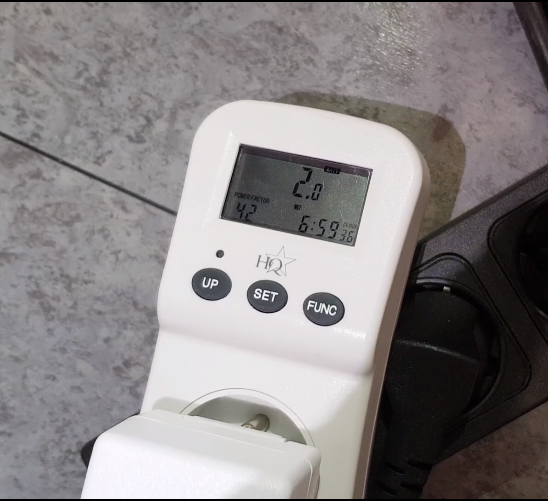
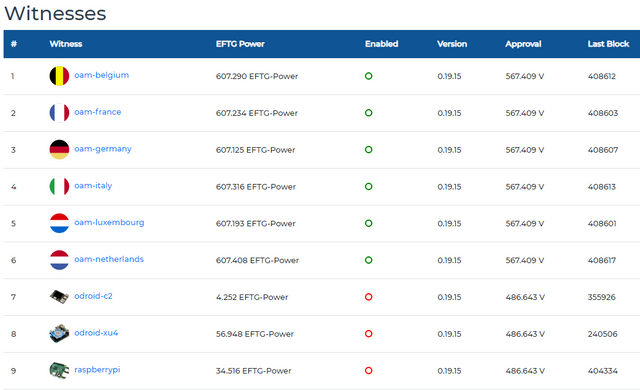
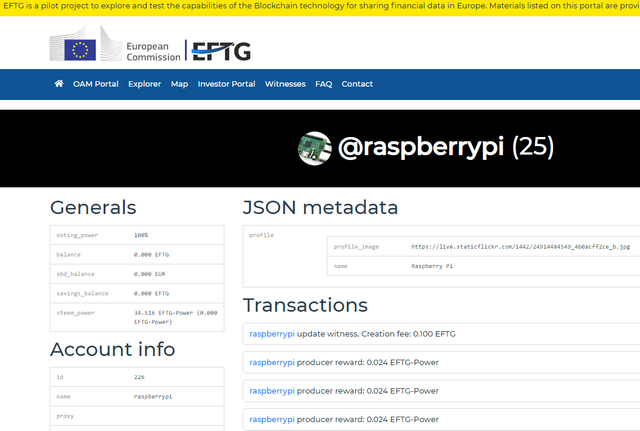
That thing looks mighty cool! So I'm interested as to what potential use cases you have in mind for the "EU Blockchain" should everything goes right?
Posted using Partiko Android
Some of them are described (in broad terms but also with a few examples) in this earlier post:
Incentive-based regulation - Blockchain opens up a new era of European integration
If you know what witnesses are and agree that people commited to keeping this blockchain ticking play an important role ...
(by simply clicking on the picture - thanks to SteemConnect)
Cool! :-)
Recently I was able to build and run a slightly modified steemd v0.20.10 on a 32bit ARMv7 Processor (v7l), but it's doomed to fail before reaching HEAD block of our blockchain (I just synced 5'000'000 blocks or so as a PoC)
Next step for our "rezident wizard" @pstaiano (the better half of @lux-witness) is to synchronize with the steem mainnet on an Nvidia Jetson Nano. Just for the challenge :-)
If you know what witnesses are and agree that people commited to keeping this blockchain ticking play an important role ...
(by simply clicking on the picture - thanks to SteemConnect)
Congratulations to your team, Sorin, for the accomplishment!
Your Steem clone, is it massively modified or similar results could be obtained with the original Steem code?
Very tiny modifications are needed such as stacktrace handling or non-SSE blake2 implementation for the PoW purposes (which is not used anymore anyway), main problem are architectural restrictions (as I was trying on 32bit ARM7 instead of 64bit ARM8). Then, when RAM runs out there is too much I/O to handle on much slower memory.
Will MIRA help mitigate the issue?
Definitely it solves one of my problems that I was facing (unable to allocate such big shared memory file to allow me to replay).
Similar results can be obtained with the original steem code, our modifications have mostly to do with governance ("permissioned enterprise" setting vs. "permissionless" for the public chain).
However the public chain has grown too much now to fit. This is mostly interesting for other enterprises who might want to experiment with permissioned steem clones.
I believe @steemchiller experiments with highly compressed state file for his Steem Data Service he is developing. But the state file will continue to grow in time.
Posted using Partiko Android
Well, when it comes to Steem mainnet, highly compressed is still in tens of gigabytes soit wouldn't help in case of this spec.
Wow, dang.
Some things seem to move.
Where can I read about the aim of the EU's Private steem clone?
Posted using Partiko Android
Scroll to the very bottom of the article, click on the picture with the Golden Lady and approve @lux-witness and IF you do that, suddenly a series of "Related posts" will appear above ! Magic ! :-D
Nah
That's some kinda old occultism tactic
No thanks, you can keep your secrets ;)
Posted using Partiko Android
Congratulations on the achievement guys
Good luck with the progress
Thanks Nathan!
Forgive my lack of knowledge here but what is the point of this and the clone?
Is it to create a blockchain that can be run with minimal computation power? I am not following the reasoning for the project.
In terms of code-base for enterprise pilots the offering is very limited:
As far as I'm aware, our team is the only one using the steem code-base for corporate projects. One of the big advantages of steem as a blockchain for corporate pilots is the very low overall cost of experimenting and learning (most enterprises are still at the "trial and error" phase).
More enterprises experimenting with steem code in turn means a bigger eco-system of people aware of the capabilities, features and differences of this blockchain, as well as a greater number of developers becoming familiar with the steem code
Being able to have a physical node for less than 100€ should encourage more companies to approach blockchain in general and steem in particular and experiment with it.
The "mobile" part illustrates another aspect: in "Normieland" you'll be surprised how many decision-makers are still replying (when hearing the word "blockchain") "I've heard blockchain uses a lot of energy!"
You can provide a sophisticated answer to this remark ("there are many types of consensus protocols, it depends ...").
Or you can give them this baby to hold in their hands and simply tell them: "this is a blockchain node, it consumes about as much energy as the smartphone in your pocket". I can hardly think of something better at convincing people than actually touching "the object" (whatever it is) and holding it in their own hands.
Ah thank you. I see what you are doing now. That is really terrific.
This is a test case to present to enterprises that are thinking about experimenting with building upon the Steem ecosystem. It shows them how little energy is required to run the "clone" translating into full node (which are helped by MIRA).
Not being a programmer, I missed the entire message of this post. This is a great tool to show companies that are thinking about entering this space.
You are targeting what is need....we require a lot more developers to find Steem.
By the way, there's a common misconception about our full nodes (I explained that in one of my Steem Pressure posts):
Importantly, a full node means here something different than in the Bitcoin realm, where Bitcoin full node is pretty much something that a Steem consensus node can do.
Here, on Steem, the word “full” doesn’t refer to anything related to the blockchain - it refers to the fully featured set of APIs enabled within steemd.
Totally my thoughts exactly... Im so confused. :)
Posted using Partiko Android
Cool!
You have some more links to the details of this project?
Thanks!
I've updated the post and added some links which provide more information
I don't have much technical knowledge of how nodes works but by reading the post what I understand us that one can run those node on small devices right?
And I am a big fan of Raspberry Pi also.
Posted using Partiko Android
Absolutely!
However, as a blockchain pilot advances, it will likely outgrow these small devices.
It still allows an organization to build a resilient network (perhaps including more than 1 cloud provider as well as a variety of such devices) quickly and at low cost. It can be used for testing various parameters of a blockchain deployment
Nice little demo there. Thank you for sharing!
Glad you appreciated !
Great work that's really impressive.
Posted using Partiko Android
Merit goes mostly to @pstaiano ! He "Zer Wizard" ! :)
👍🙂
Posted with